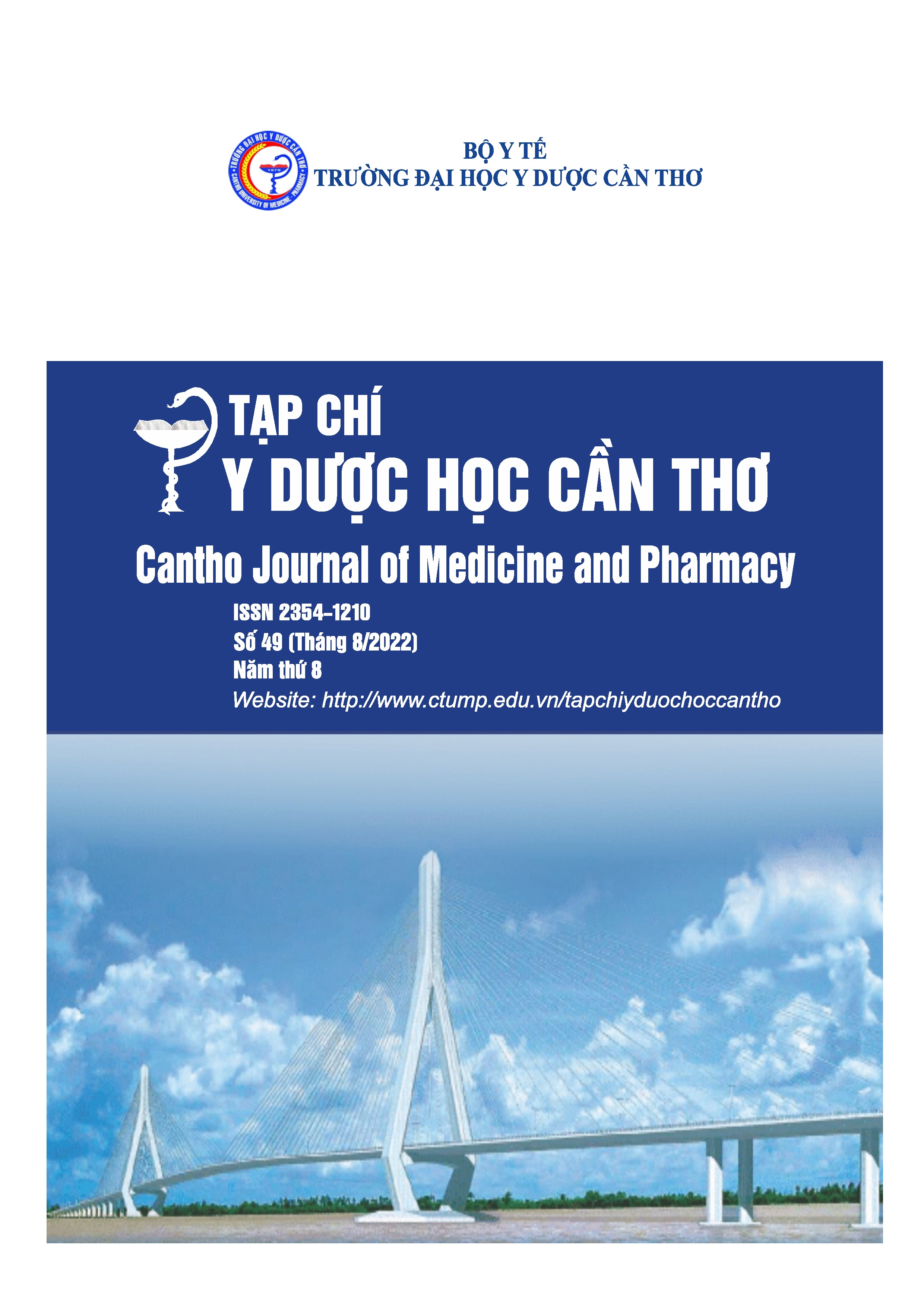QUALITY OF LIFE AND ASSOCIATED FACTORS OF CANCER PATIENTS AFTER CHEMOTHERAPY
Main Article Content
Abstract
Background: Quality of life is considered one of the criteria to evaluate the effectiveness of treatment. However, the measurement and identification of factors affecting the quality of life of cancer patients after chemotherapy remain limited. Objectives: To measure the quality of life of cancer patients after chemotherapy and identify the related factors. Materials and methods: A cross-sectional descriptive study was conducted on 43 cancer patients after chemotherapy at the Oncology Department of Can Tho University of Medicine and Pharmacy Hospital. To assess the quality of life, the European Organisation for Research and Treatment of Cancer quality of life questionnaire-30 (EORTC QLQ-30) was used. Results: The mean quality of life scores for global health status, function, and symptoms were 61.82, 69.51, and 27.84, respectively. The mean physical function scores were higher in the occupational group of employees than in other occupational groups, the later the cancer stage, the decreased role functioning and social functioning. The mean symptoms of vomiting and nausea scores were higher in women than in men, in pensioners higher than in other occupations, and in stage IV higher than in stages II and III. As age higher, the quality of life decreases, and the lower the BMI, the lower the quality of life. Conclusion: Age, gender, occupation, stages of cancer, and BMI had an impact on the quality of life of cancer patients after chemotherapy.
Article Details
Keywords
Cancer, chemotherapy, quality of life, EORTC QLQ-30
References
2. Nông Văn Dương và cộng sự (2016), “Khảo sát tình trạng đau và chất lượng cuộc sống của người bệnh ung thư giai đoạn muộn được chăm sóc giảm nhẹ tại Trung tâm ung bướu Thái Nguyên”, Khoa học Điều dưỡng, 1(4), tr.7-13.
3. Trần Văn Hùng, Nguyễn Duy Phong và Trịnh Thị Thu Thủy (2019), “Chất lượng cuộc sống và các yếu tố liên quan của người bệnh ung thư đang được điều trị tại các khoa lâm sàng Bệnh viện Đại học Y Dược Thành Phố Hồ Chí Minh năm 2019”, Tạp chí Khoa học Nghiên cứu Sức khỏe và Phát triển, 3(03), tr.16-27.
4. Nguyễn Thành Lam và cộng sự (2019), “Tình trạng đau và chất lượng cuộc sống của người bệnh ung thư điều trị tại Trung tâm Ung bướu Thái Nguyên từ tháng 1-6 năm 2019”, Bệnh viện Trung Ương Thái Nguyên.
5. Nguyễn Đức Thành và cộng sự (2020), “Đánh giá chất lượng cuộc sống người bệnh ung thư vú sau phẫu thuật”, Tạp chí Y học lâm sàng, 06, tr.67-72.
6. Mai Thu Trang và cộng sự (2020), “Đánh giá chất lượng cuộc sống người bệnh ung thư giai đoạn III, IV theo bộ công cụ EORTC QLQ-C30 tại Bệnh viện đa khoa tỉnh Thái Bình”, TNU Journal of Science and Technology, 225(08), tr.388-394.
7. EORTC QLQ-C30 Scoring Manual (2001), third edition, pp.5-8.
8. Globocan (2020), Cancer Country Profile 2020.
9. Gujral, S et al. (2007), “Assessing quality of life in patients with colorectal cancer: An update of the EORTC quality of life questionnaire”, European Journal of Cancer, 43(10), pp.1564-1573.
10. Sunanda, V. Naga et al. (2018), “Quality of Life Assessment in Cancer Patients of Regional Centre of Hyderabad City”, Journal of Applied Pharmaceutical Science, 8(01), pp.165-169.


